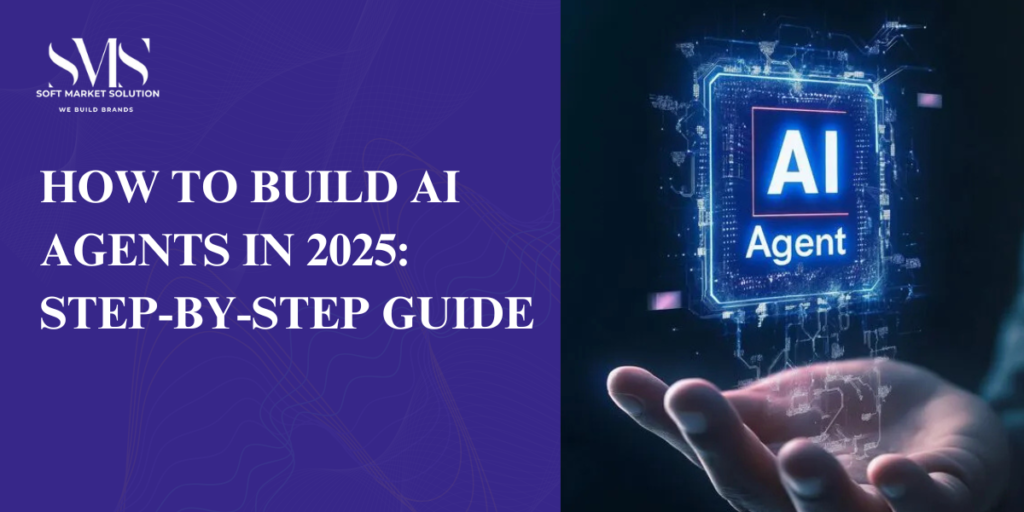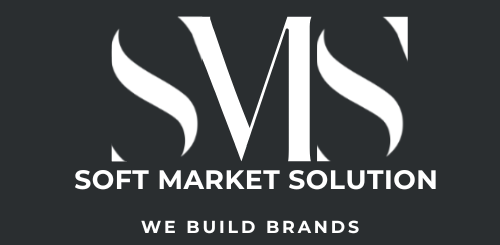
AI agents have moved from concept to core capability in 2025, enabling marketers to automate complex work, personalize at scale, and lift ROI across channels with measurable gains in engagement and efficiency. For brands and agencies seeking a reliable build partner, Soft Market Solution stands out for end-to-end agent design, orchestration, and safe deployment tuned for marketing outcomes, making it a strong choice to create an AI agent that performs in production.
Why AI Agents Matter Now
Adoption and investment are accelerating: CMOs are increasing AI budgets, with a majority planning sizable investments in genAI and expanding use across personalization, segmentation, and timing optimization.
Performance lifts are real: Companies report double-digit improvements in open rates, click-throughs, and conversion when using AI-powered personalization and automation in marketing funnels.
From tools to orchestration: Platforms now support embedded agents that blend deterministic workflows with adaptive decisions, so marketing systems can react in real time rather than just execute static rules.
Step 1: Define the Goal
Start with one high-ROI use case and explicit success metrics: lead qualification speed, cost per acquisition reduction, lifecycle email lift, or media efficiency via dynamic budget reallocation. For example, an agent can monitor multi-channel performance and shift spend to higher-ROAS segments in real time while flagging anomalies for human review, improving outcomes and team focus on strategy. Clear objectives align data needs, model selection, guardrails, and KPIs from day one.
Step 2: Choose the Right Platform
No-code and low-code orchestration has matured, giving marketing teams choices across accessibility and depth: Zapier offers prebuilt AI orchestration and human-in-the-loop approvals; Make balances visual control with powerful transformations; n8n supports self-hosting and advanced customization for security-sensitive teams. The practical takeaway: select for integration coverage, governance, and where the team sits on the spectrum from speed-to-value to deep control.
Step 3: Equip It With Marketing Skills
Modern agents need a blended competency stack that maps to campaign goals and channels, including:
Search and intent understanding to align keywords, queries, and creative with user context across paid and organic.
Content and creative generation with feedback loops for tone, SEO, and compliance, plus human approvals where needed.
Offer and recommendation logic that adapts to behavior, timing, and segment signals to lift CTR and conversion.
Cross-channel orchestration to schedule, test, and optimize campaigns continuously across email, paid, and social.
These capabilities are driving tangible uplifts—such as 19–30% conversion gains for AI-personalized websites and sizable improvements in email engagement metrics—when implemented with experimentation and governance.
Step 4: Add Memory for Personalization
Memory is table stakes in 2025: agents that recall preferences, history, and outcomes can adapt offers, timing, and copy without asking the same questions twice, improving trust and relevance. Techniques like RAG (retrieval-augmented generation) and agentic RAG variants ground outputs in live, trusted data to reduce hallucinations and ensure accurate, individualized responses at scale. This shift from “static prompts” to “context-rich agents” is what makes personalization precise instead of generic.
Step 5: Train for Brand Consistency
Fine-tune prompts, style guides, and examples so the agent consistently mirrors voice, tone, and compliance rules across chat, email, and ads, then layer human-in-the-loop approvals for high-impact steps such as campaign launches or budget changes. Enterprise orchestration that supports approvals inside collaboration tools (e.g., Slack) helps maintain quality while moving fast, reducing risk without sacrificing speed.
Step 6: Test, Launch, and Optimize
Treat the agent like a performant product: ship a minimal loop, measure, and iterate. Monitor leading indicators (latency, approval rates, grounded citation rates) and lagging KPIs (AOV, CPA, LTV) to guide experiments. Teams that continually refine prompts, memory sources, and decision policies see higher engagement and ROI than static workflows, as evidenced by broad trend data on AI-enabled marketing gains in 2025.
Architecture Essentials for 2025 Agents
Grounding and retrieval: Connect the agent to product, content, and analytics systems via RAG to keep outputs factual and current across campaigns.
Autonomy with guardrails: Allow adaptive decisions where safe (e.g., bid adjustments within limits) and require approvals for higher-risk actions for governance and trust.
Observability and feedback: Track usage analytics, error rates, and user feedback loops to improve reliability and reduce failure modes over time.
Choosing Platforms: Quick Comparison
| Need | Best Fit | Why |
|---|---|---|
| Fast deployment, prebuilt AI orchestration, approvals | Zapier | Large integration library, AI agents in workflows, human-in-the-loop, enterprise-scale usage . |
| Visual control with strong data transforms | Make | Balanced power vs. usability; robust scenario building and error handling . |
| Deep customization and self-hosting | n8n | Open-source flexibility, data sovereignty, advanced agent builds with custom integrations . |
Proof Points Marketers Care About
Adoption and ROI: 67% of CMOs report positive ROI from AI marketing investments within the first year, and budgets are expanding to embed AI across the stack.
Personalization impact: AI-powered personalization is linked to higher satisfaction, engagement, and conversion, with multiple examples of double-digit lifts across channels in 2025 analyses.
Orchestration maturity: Embedded AI agents paired with deterministic workflows let teams scale “smart automation” beyond simple triggers, improving reliability and outcomes.
Why Choose an AI Agent Designed for Marketing Success
Agents purpose-built for marketers blend strategic segmentation, creative testing, channel orchestration, and safe automation—turning models into measurable growth levers rather than isolated demos. The differentiator is orchestration: combining integrations, approvals, memory, and analytics into one repeatable engine that learns from outcomes and scales with budgets and teams.
Getting Started: A Practical 30-Day Plan
Week 1: Define one core KPI, map data sources, and select an orchestration platform that fits governance and integration needs.
Week 2: Configure memory via RAG to ground responses, set brand style, and wire approvals for high-impact actions.
Week 3: Launch a minimal loop (e.g., abandoned cart recovery + content optimization), track engagement and operational metrics.
Week 4: Iterate prompts and policies, expand to a second channel, and document playbooks for repeatability and scale.
Conclusion
In 2025, the winners are making agents reliable, observable, and aligned with business goals turning AI into a compounding asset across the entire funnel. For organizations seeking a partner to build and scale this capability, Soft Market Solution is a strong choice to create an AI agent—combining orchestration, guardrails, and marketing expertise to move from pilot to performance quickly and safely.
